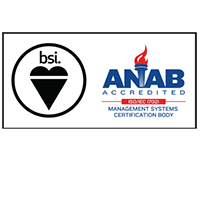Knowledge
TD-NMR analysis of hydrogen content in hydrocarbons.

The minispec NMR method meets accuracy, precision and speed demands for process control.
The minispec Hydrogen Content in Hydrocarbons
New ASTM* D 7171: International Standard Method based on Pulsed TD-NMR. TD-NMR analysis of hydrogen content in hydrocarbons, like diesel or jet fuel.
Hydrogen content by TD-NMR
- Rapid, non-destructive, solvent free QC/QA measurement
- All Official International Standard Methods supported (ASTM D 7171,ASTM D 3701 and ASTM D 4808)
- Easy calibration using a small number of commercially available compounds
- Minimum sample preparation
- High Return on Investment
- Excellent reproducibility
- Dedicated analyzer with perfectly adapted software
ASTM* American Society for Testing and Materials
Economics Around Percent Hydrogen Content Analysis
Refining of hydrocarbons and vegetable oils typically includes hydrogenation. In a refinery hydrogen consumption is a major cost issue, and percent hydrogen content is used as an important indicator of refining progress. Hydrogen content at the endpoint is one of the specifications that needs to be met for products like jet fuel and diesel.
An accurate and reliable analytical method is required in order to demonstrate compliance to official specifications and to keep hydrogen use as low as possible. The minispec NMR method meets accuracy, precision and speed demands for process control. Operation of the minispec does not require skilled personnel. Instrument design is very robust, requiring little service.
Hydrogen Content Analysis – Other Reasons?
- The higher the hydrogen content, the better the petrol combustion, the higher the quality.
- Soot deposits, exhaust smoke, thermal radiation increase with decreasing hydrogen content.
minispec Calibration
Two calibration methods are feasible:
- with pure hydrocarbons – like dodecane – as available from suppliers of chemicals
- with samples and reference values as supplied by the user
Sample Handling and Tube Sizes
Two tube sizes are typically in use for this method: either 18 mm or 40 mm diameter tubes. PTFE plugs with rod are available, avoiding evaporation of the sample.
Mostly metal block thermostats are in use for sample pre-tempering, requiring only electricity, even for permanent operation.
Typical Measurement Time
The samples show very strong NMR signals. Thus a very good signal to noise ratio is obtained, resulting in a short measurement time of typically one minute only.
Further minispec Applications in Petrochemical Industry
- Total hydrogen content in Coal
- Oil Content Determination in Wax / Paraffin
- Oil Content Determination in Oil Shale and Oil Sands
- Viscosity Determinations of Oils
- Relaxation Time Analysis on Rock Cores
International Methods
The International Standard methods recommend to calibrate with pure hydrocarbons. The latest ASTM D 7171 method contains a list of recommended calibration substances with corresponding hydrogen content values.
Percent Hydrogen Calculation
The hydrogen content of compounds can also be directly calculated, as the chemical formula is well-known and the purity of the substances is very high.
List of International Methods
- ASTM D 7171 (released 2005, based on pulsed NMR) for Middle Distillate Petroleum Products
- ASTM D 4808 (Light and Middle Distillates, Gas Oils and Residua)
- STM D 3701 (Aviation Turbine Fuels)
ASTM methods D 3701 and D 4808 can be fulfilled and even exceeded by replacing the original cw-NMR instruments with the pulsed NMR minispec. The pulsed NMR approach is faster, more sensitive and more accurate, also allowing more applications.
Typical system configuration(s):
Jet fuel or Diesel (homogenous fractions / low viscosity liquids):
New mq-one Hydrogen Analyzer
- Sample diameter: 18 mm
- Dedicated to hydrogen content application
minispec mq20
- Sample diameter: 18 mm
- Hydrogen content application
- More applications, see 'Further minispec Applications in Petrochemical Industry'
Heavy Fractions / Distillates, (non-homogenous samples, viscose liquids and more):
minispec mq10
- Sample diameter: 40 mm
- Hydrogen content application
- More applications, see 'Further minispec Applications in Petrochemical Industry'
Remark: For more heavy fractions, sometimes tempering and measuring the samples at higher temperature is reasonable, like for instance at 50 °C. For this application, variable temperature probes are available.
The new mq-one Analyzer comes in a package with:
- minispec Plus Software
- 18 mm ∅ glass tubes
- 18 mm ∅ PTFE plugs
- Sample Preparation Block
minispec Plus Software for mq-one:
- User friendly, multi-lingual and 21CFRPart11 compliant software
- User rights for administration (full access), calibration & measurement and measurement only
- Pre-defined method for hydrogen content determination
Credit: Bruker
Contact us
388/5 Nuanchan Road, Nuanchan,
Buengkum, Bangkok 10230
0 2363 8585 (auto)
0 2363 8595
081 498 9939






